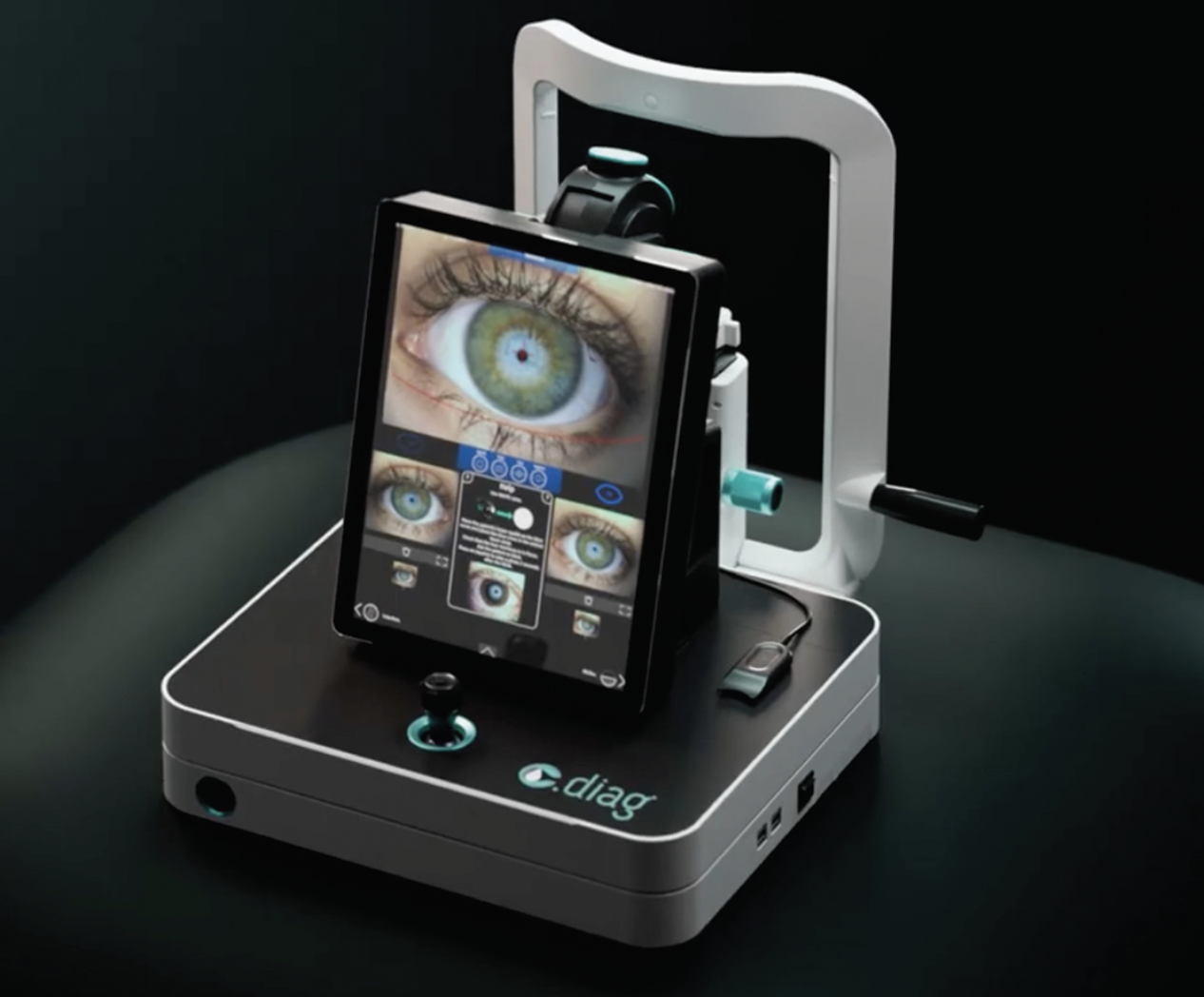Imaging and Diagnostics
AI for Dry Eye
If certain dry-eye patients have been a challenge to diagnose in the past, a new device from Lumibird may be able to assist.
 |
The company recently launched Omnicad, an ocular surface imaging system that integrates multiple exams such as transillumination meibography and an autofocus HD camera for sharp image quality and automatic, accurate and reproducible results, Lumibird says. To help display the health of the meibomian glands, the device uses an eyelid everter with transillumination infrared light to get two images in one click, notes the company.
The Omnicad also incorporates artificial intelligence, based on algorithms derived from more than one million clinically validated images. For more information, visit lumibirdmedical.com.
Easyfield VR Headset Upgrade Available
Earlier this year, Oculus introduced its Easyfield virtual reality headset for assessing patients’ visual field, color vision and stereopsis. The original device uses standard automated perimetry (SAP) for VF testing; now, an optional update announced recently by the company also gives it the capability to perform frequency doubling perimetry (FDP).
Compared to SAP, FDP—which uses a series of flickering white and black bands—has been shown to evaluate the extent and pattern of VF loss with high precision and specificity. Particularly in glaucoma or ocular hypertensive patients, FDP may offer the benefit of sooner detection of functional damage.
The company says that practitioners can configure the Easyfield VR with one testing strategy, then upgrade to a dual configuration combining FDP and SAP as needed down the road. The headset can also be used in a fully lit room, with no internet connection required.
For more information, visit oculususa.com/easyfield-vr.
Streamlined Fundus Imaging
A new automated fundus camera on the market aims to help streamline retinal exams for physicians and staff. Launched by Visionix USA, the VX 610 non-mydriatic fundus camera is equipped with automatic functions for alignment, focus and capture to enhance imaging accuracy and consistency, according to the company.
The camera uses technology referred to by Visionix as “cross-polarized light,” which developers say enables high-quality imaging clarity without the need for pupil dilation. It offers a 45-degree field of view along with a 90-degree mosaic function for extensive retinal screening capabilities.
Using AI, the company explains that the system is trained to auto-detect early signs of 13 common retinal pathologies. Visionix notes that the AI technology correctly flags a positive result 93 percent of the time, while negative results are properly identified at a rate of 90.6 percent. The VX 610 device employs a touch-screen interface and occupies a compact space, making it easy to integrate into various practice settings, says Visionix.
For more information, visit visionix.com/product/visionix-vx-610.
New Functionality for Maestro2
For clinicians familiar with the Maestro2 OCT device from Topcon, the company recently announced a new upgrade: now, the color fundus camera is also available with OCT angiography, an imaging modality increasingly being employed in eye care to help identify and assess various vascular and retinal conditions.
The device, featuring single-touch automated image capture, offers 3×3, 4.5×4.5 and 6x6 mm OCTA scans to evaluate macular disorders such as age-related macular degeneration, Topcon says. Additionally, a 12x9 mm 3D widefield scan can be used to analyze more peripheral areas of the eye affected by conditions like diabetic retinopathy and vein and artery occlusions.
Other features now integrated into the Maestro2 with OCTA system include one the company calls “pinpoint registration,” which enables comparison of subclinical OCT and OCTA findings with related areas on a color fundus photograph, as well as an eye-tracking feature that helps to improve image quality and reduce motion artifacts. The combined system also offers en face OCT-A imaging and Angio B color-coding to help discern normal and abnormal blood flow in the retina and choroid.
The Maestro2 OCT can be purchased with or without OCTA. For doctors who already own a Maestro2 device, Topcon says most will have the option to purchase an OCTA upgrade.
For more information on the Maestro2, visit topconhealthcare.com/maestro2.



